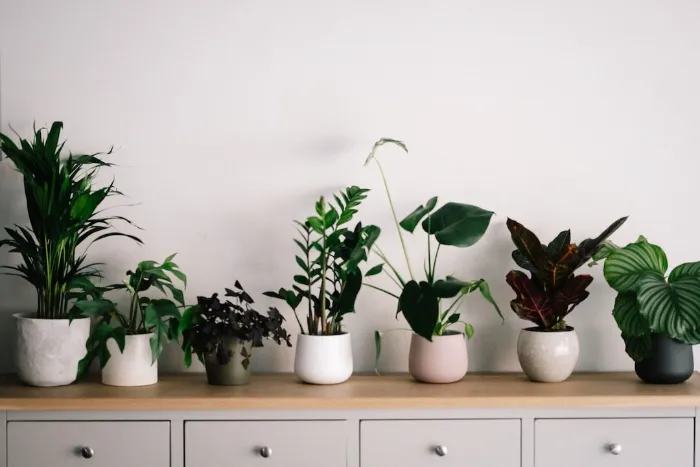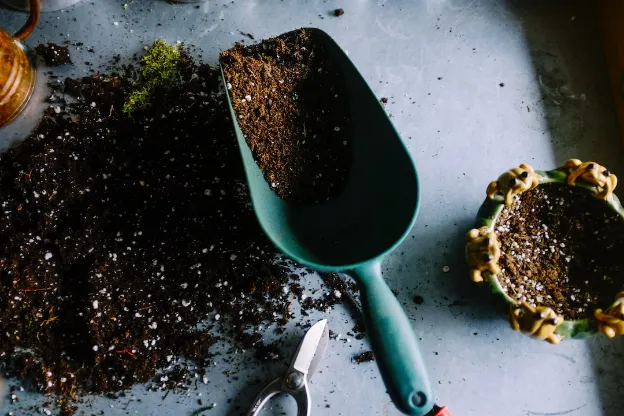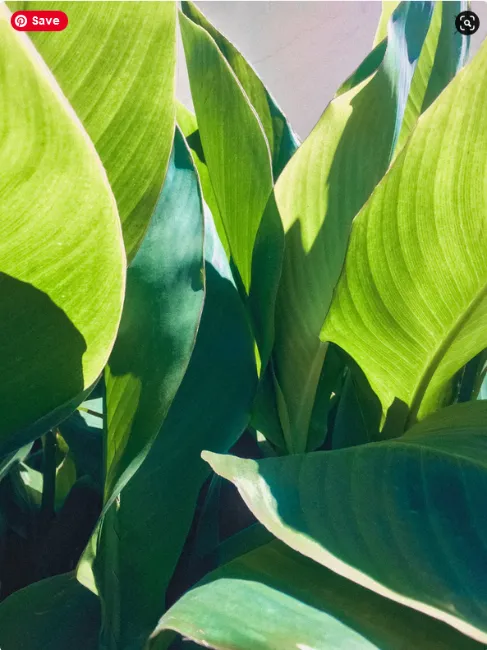Araceae 101: A Beginner's Guide to Growing and Caring

Green Thumbs Up: Growing Araceae Like a Pro
Araceae plants, sometimes known as the "aroid" family, include pothos, philodendrons, anthuriums, and peace lilies. They are also renowned for their capacity to filter the air.
Araceae are frequently propagated by cuttings, in which the plant stem is divided into pieces that can be rooted to produce a new plant.
Light
They are known as Araceae or arum plants, and they are widely used as houseplants. They are simple to maintain and grow well in a variety of lighting situations. Even colder temperatures can be tolerated by some animals.
They are a large and diverse family of plants, and all of their mature leaves have various sizes and forms as well as a spathe or petal-like structure to entice pollinators. Additionally, they have an eye-catching inflorescence, which is a ring of flowers that encircles a spadix, or spike.
There are about 100 genera and 3700 species in the Araceae family. While some are renowned landscape plants, others are well-liked inside plants.
The majority of these plants are tropical, and while they can withstand mild temperatures, they do not appreciate frost. They favor moderate humidity and temperatures between 65 and 85 degrees Fahrenheit.
Their leaves are protected from bugs and other debris that could clog their pores and hinder photosynthesis and respiration by a waxy layer. They become highly resilient as a result, and they also shine beautifully.
They can be multiplied by cuttings, which is a technique in which the plant's stem is divided into pieces and rooted to create a new plant. The cutting is typically done by submerging it in water and allowing it to root.
Although aroids do not require continual watering, it is best to check the soil daily to make sure it is still moist. They also prefer a well-draining potting mix and indirect sunlight in a shady area.
It's crucial to read the label of your potting mix and carefully adhere to its directions because some Araceae plants are more sensitive to moisture than others. When the top two inches of soil are dry to the touch, it's a good idea to water.
During the growing season, fertilizer is another option. For instance, Colocasia esculenta will benefit from liquid PLNTS Nutrition. The majority of aroids are excellent understory plants for brilliant windows that receive indirect, low light since they are particularly tolerant of reduced light. However, in this circumstance, the Swiss cheese plant (Monstera) may be more challenging to care for.
Water
Araceae, often known as aroids, is a remarkable plant family that has grown to be some of the most well-liked houseplants in the entire world. They have a broad variety of colors, shapes, sizes, and textures and are simple to cultivate and maintain.
The majority of aroids are tropical plants, which means they do best in areas with high humidity, warm temperatures, and protection from wind. They can tolerate various types of soil and both low and high light levels.
Over 100 genera and about 3,700 identified species make up the Araceae family. One of the earliest and most rudimentary families of monocotyledonous plants, they are.
With many plants that are indigenous to the tropics and other areas, they are also the most diversified. They have evolved some clever defense mechanisms against herbivore consumption, such as calcium oxalate crystals in their leaves.
These plants also have a neat ability to reproduce in water, which is an adaptation that helps them withstand flooding in their natural habitats. Additionally, certain Araceae family members have the ability to produce heat on their own by utilizing starches that have been stored.
In colder climes, some aroids, including skunk cabbage, employ this capacity to melt snow for their flowers. While some plants, like the philodendron, cannot generate their own heat, they can nevertheless draw pollinators to their flowers by giving off a sweet, enticing scent that attracts insects.
Fortunately, the majority of aroids don't need much maintenance, and you can readily replicate many of them from leafless stem cuttings you take with a node (known as wet sticks). In the first few inches of soil, you'll want to keep the roots of your plant fairly dry, but for cuttings to root successfully, you might need to water them occasionally.
Rot, which happens when the plants are overwatered, is a condition that various aroids frequently experience. Fungi in the soil mixture or water contamination may be to blame for this. The fungi will cause the leaves higher up the stalk to wilt and die, and the base of the stalks to discolor and contract.
Soil
Many of our favorite houseplants, such as philodendrons, anthuriums, monsteras, pothos, peace lilies, and Syngoniums, are members of the popular aroid plant family. They are forest understory plants that do well in low light and flourish in damp soil in their natural habitat.
Additionally, these plants are incredibly simple to grow from seed, particularly when using leaf or stem cuttings. You may even try this method at home to reproduce some kinds by allowing them to root in water.
There are more than 300 species in the aroid family, which are found everywhere from tropical Asia to Antarctica. The inflorescence, a form of a flower with a spathe (an enclosing structure) that shields the flowering spike from direct sunlight and aids in temperature regulation, is characteristic of most aroids.
The ability of aroids to adapt to shifting conditions is another outstanding quality. They can flourish in a broad range of environments, such as those with low or high light levels, dry or moist soil, and warm or chilly temperatures.
Some aroids, like North American skunk cabbage, can produce heat (Symplocarpus foetidus). One of the very few plants that can truly produce heat utilizing carbohydrates stored in its roots is this one.
This trait makes the plant popular among North American gardeners in the spring since it can assist the plant in absorbing snow in frigid locations. Flies and gnats, which are active from late February to early March, are drawn to its smell and may assist in pollinating the plant.
Aroids also have specific needs for their soil, which must be both permeable to air and water and moist enough to maintain the health of the roots. Additionally, they choose a potting mix with sufficient drainage and a moderate humidity level.
Use a potting mix that is well-draining and has a lot of organic material for the greatest results. Any high-quality potting soil can be used to make this mixture, although some dedicated aroid collectors prefer to make their own special potting soil for their plants. Some mixtures contain a combination of horticulture charcoal, perlite, and bark.
Temperature
Consider an Araceae plant if you're looking for a tropical plant that will liven up your house with color and charm. Many members of this plant family can grow from underground rhizomes to produce huge leaves and eye-catching inflorescences. It is commonly found in the understory of forests all over the world (flowers).
Due to their beauty and tolerance to indoor environments, Araceae plants are popular as indoor houseplants. Although certain species benefit from more direct lighting, they can function effectively in low to medium light.
Even while these plants will thrive with a regular weekly watering regimen, a humidifier may help keep the air in the room moist and prevent overwatering. Dry air tends to irritate aroid plants, and they could develop root or stem rot if they are exposed to it.
Aroids should be kept in warm, humid environments for optimal results. Temperatures between 65 and 85 degrees Fahrenheit are ideal for them.
Certain aroids can also withstand increased humidity. These include philodendrons and monsteras.
The vibrant foliage and year-round blossoms of Araceae plants make them a wonderful complement to any home or business setting. They are a popular option for gifts as well because, with appropriate care, they may live for many months or even years.
As long as you stick to a watering schedule, they are quite simple to take care of. However, you must make sure your plant has access to high-purity water because they do prefer it if at all feasible.
Some of our favorite houseplants, including philodendrons and peace lilies, are members of the Araceae family. Neon pothos and other Araceae species come in vivid colors, which provide any space a splash of color.
Due to their susceptibility to scale insects and mealybugs, these plants require routine horticultural (Neem) oil treatments or regular cleanings to keep pests at bay. Araceae plants should always be kept out of reach by children and dogs since they are extremely hazardous if consumed.
Because of their colorful, exotic foliage and year-round flowers, anthuriums are another well-liked member of the Araceae family that is frequently used as houseplants and gifts. All they require for maintenance is a regular watering regimen and a suitable level of humidity.
In Conclusion:
Araceae is a fascinating group of plants that can make great additions to any garden. With the right care and attention, they are sure to thrive! Whether you're looking for an easy-care houseplant or want to add some color and texture to your outdoor space, there's an Araceae plant out there that will perfectly suit your needs. By following our beginner's guide on how to grow and care for Araceae, you'll have success in cultivating these gorgeous plants.




